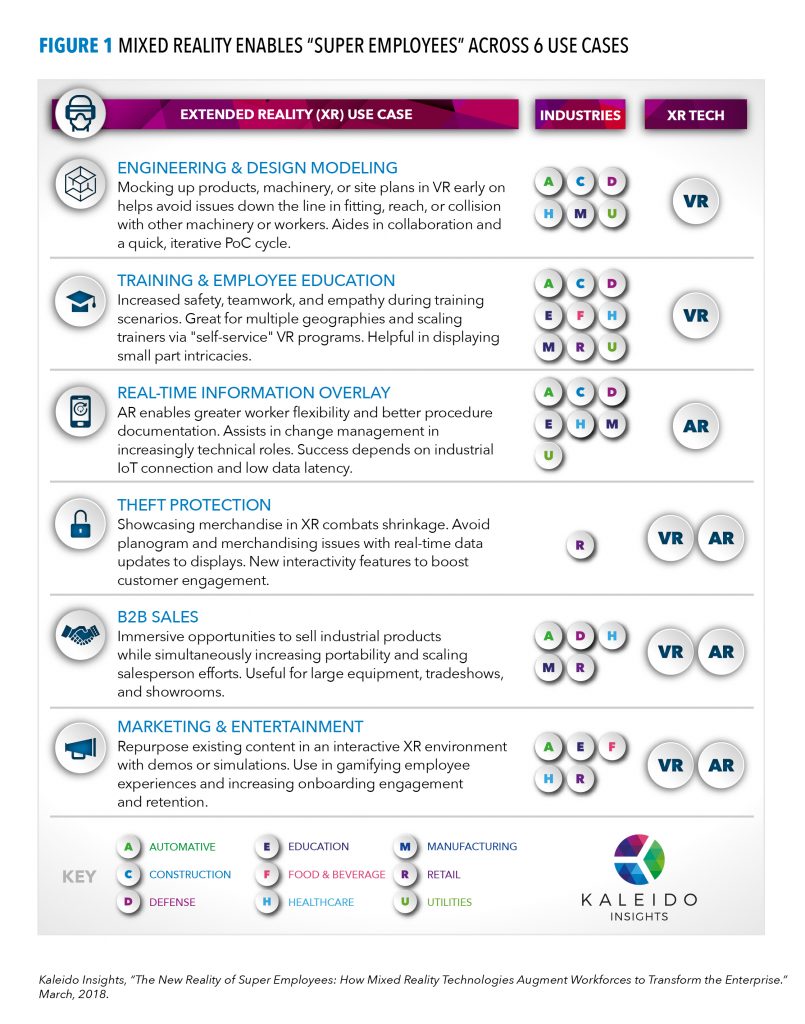Pressure to innovate pushes change agents toward mixed reality pilots
From immersive virtual reality training to interactive augmented reality product experiences, mixed reality experiments are making their way from pockets of innovation within corporations to full-fledged programs — –that is, if they don’t fall prey to “innovation cannibalism” first.
Companies are under increasing pressure to constantly innovate, often guided by a digital transformation or corporate innovation charter that is mandated by the C-suite, supported by middle management guidance and executed by grassroots “intra-preneurs.” This mounting pressure can serve as both a blessing and a curse for survival. Change agents strive to not only brainstorm the next big idea that will push the company into a new era of technology revolution, but also simultaneously hide their efforts from colleagues and other departments in order to get the glory of being the smartest person in the room.
Hence, innovation cannibalism is born, and virtual and augmented reality (VR/AR, or “XR” as a catchall term for “extended reality”) pilots are its latest victim. Rather than moving the company forward, these competing technology proofs of concept (POCs) ultimately compete for executive budgets and attention, rather than operating toward a common goal. Preceded by myriad other bright, shiny technologies under the innovator’s microscope, XR serves as the next tool primed for real market testing and even companywide rollout, if it can make it out of the corporate innovation vacuum.
ARtillry Intelligence projects enterprise mixed reality alone to grow from $554 million in 2016 to $39 billion by 2021. Growth is dependent on both perceived and proven value as organizations look to competitors and other industry best practices in order to gauge potential success. XR is sitting in the sweet spot for corporate innovators looking to reference existing case examples from early adopting enterprises in order to make their case, while still offering plenty of open water to brainstorm that next big idea to differentiate. And the sea of opportunity is indeed wide, spanning both industry and departments in potential use cases to increase efficiencies, improve employee experience and positively impact the bottom line.
In our latest Kaleido Insights report, “Prepare for the New Reality of Super Employees: How VR and AR Technologies Enhance Workforces to Transform the Enterprise,” my co-author Jeremiah Owyang and I detail the top six use cases for enterprise mixed reality (see Fig. 1 infographic below), as well as the challenges encountered along the road to fruition and a checklist of considerations for implementation. From training employees on dangerous tasks in a completely virtual (and safe) environment, to cutting theft of high-ticket item merchandise in-store, organizations are experimenting with reinvention of legacy procedures and methods to future-proof their businesses.
Though these mixed reality experimentations are typically driven straight from a corporate innovation charter and brought to life by innovation teams, labs and outposts, these change agents aren’t the only catalysts of XR testing. Other sparks that set POCs ablaze include:
Middle management pursues efficiencies
In tandem to XR charters led by innovation groups, other typical leaders of mixed reality initiatives rise from useful, real-world applications. When management in more technical roles — like field service, warehouse logistics or engineering production — come across use cases where XR could make their lives easier, they reach out to internal or external resources to begin experimentation. “Our customers are those who are dealing with challenges upfront and see VR as a way to solve a problem,” shared Jakub Korczyński, CEO of VR solution provider Giant Lazer. “These people get VR’s potential the quickest as they envision immediate benefit.”
HR and marketing strive to impress
In an effort to impress current employees and higher-ups, as well as attract new talent, human resources leaders look toward new technologies like mixed reality. The right application will not only draw positive internal buzz, but also help to retain and inspire the existing workforce (while ideally improving their job experience). Similarly, marketing and digital leaders are often enticed by what they see as interesting XR applications on YouTube — even if these applications are not entirely feasible or applicable to the company.
Desire to compete with automation
Augmented and virtual reality enable employees to become “superhumans” in their own right, using these technologies to augment and support their bionic brains. With artificial intelligence and automation posing increasing threats to industrial manufacturing and low-wage employment, many companies are turning to XR to bring employees closer to their robotic counterparts in capabilities. Scope AR’s Co-founder and President David Nedohin explained, “AR is arming employees to compete with AI by putting them in the position to know exactly what to do to complete a task through real-time data and imagery display. Industrial IoT data can initiate the proper workflow, combined with machine learning analysis and AI, to transform employees and help them stay competitive in the workforce.”
Need for increased collaboration
During many internal processes — from product development to training to sales and service — it can be difficult to get multiple busy leaders in the same room for collaboration, especially across departments and geographies of decentralized organizations. The need for easier, more efficient and more frequent collaboration is a common driver of exploring XR’s engaging and immersive environment, where corporations see a valuable investment.
Though many XR pilots are born from corporate innovation programs, among other aforementioned catalysts, these POCs cannot achieve critical mass until supported by the company at large. Executive support is essential in spreading an innovation imperative culturally, as well as greenlighting budgetary allocation and employees toward mixed reality initiatives. Without top-down alignment and goal-oriented prioritization, grassroots XR efforts cannibalize one another in a battle for resources and attention. It takes a comprehensive strategy that examines the impacts and opportunities of all relevant emerging technologies to move mixed reality from catalyzing to testing to fruition.
Download the full research report (note: registration required), “Prepare for the New Reality of Super Employees: How VR and AR Technologies Enhance Workforces to Transform the Enterprise,” from Kaleido Insights’ website.
All IoT Agenda network contributors are responsible for the content and accuracy of their posts. Opinions are of the writers and do not necessarily convey the thoughts of IoT Agenda.

